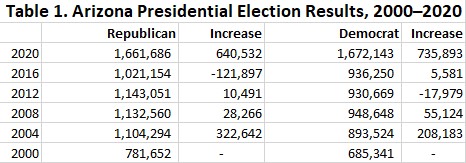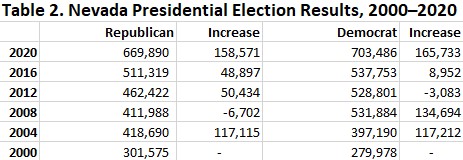- Apr 1, 2011
- 169,942
- 47,187
- 2,180
You've probably seen a bit about how Mark Zuckerberg pumped $350 million into the election. Here are some details about this corruption:


Perhaps the biggest underreported story of 2020 was how one billionaire, Facebook founder Mark Zuckerberg, joined with a sleepy Chicago-based 501(c)(3) public charity to effectively privatize the election in many states.
Meet the Center for Technology and Civic Life (CTCL), which funneled an unprecedented $350 million from Zuckerberg and his wife, Priscilla Chan, to local elections officials for COVID-19 “relief.” In a blink, CTCL grew from almost nothing—its 2018 revenues were just $1.4 million—to a titan with the means to heavily influence election outcomes in favor of Democratic presidential nominee Joe Biden in key battleground states.
As part of our ongoing investigation into CTCL’s spending, the Capital Research Center has traced “Zuck bucks” to Arizona and Nevada.
For more of our work, see our reports on Georgia and Pennsylvania, North Carolina, Michigan, and Wisconsin.
Arizona and Nevada have long been considered easy pickings for Republicans and Democrats, respectively, but were considered too tight to call for most the 2020 election season. In the end, both broke for Democrat Joe Biden in 2020, supposedly due to Trump’s unpopularity. But what if there’s far more than meets the eye in these states?
Weirdness in Arizona
First, a bit of history. Arizona comfortably favors Republicans running for president, hovering around 52 percent of the vote in elections over the past two decades. While President Bill Clinton won the state in 1996—the first Democrat to do so since Harry Truman in 1948—Democrats consistently flopped in the state before 2020, never garnering more than 45 percent of the vote. Republicans’ high-water mark was in 2004, when President George W. Bush won almost 55 percent of the state, a full 10.5 percentage points above his opponent, Sen. John Kerry.
But since then Republicans have slowly trended downward. In 2016, Donald Trump won Arizona by 3.6 percent, a disappointing margin compared to Mitt Romney’s 9 point margin in 2012. The margin was almost identical to Sen. John McCain’s margin in his own state in 2008, and probably indicates strong antipathy to Obama more than a particular fondness for either man.
In 2020, Biden won Arizona by a scant 0.3 percent—a margin of just 10,457 votes—gaining a staggering 735,893 votes over Hillary Clinton’s 2016 figures, bringing his total to 1,672,143 votes.
Barring ballot fraud, that is an absolutely stunning result—particularly given that the Biden campaign’s presence in Arizona was minimal, to be charitable, and during the campaign he first visited the state in early October. Biden himself has no historic ties to Arizona and twice lost the state as Obama’s running mate, both times by huge margins (9–10 percentage points) and losing nearly 18,000 votes from his 2008 figures in his 2012 reelection bid.
Chalking it up to President Trump’s supposedly historic unpopularity, as some pundits like to do, explains nothing. While Trump won a lower percentage of Arizona’s votes compared with his Republican predecessors, he still won a historic 1,661,686 votes—improving his vote count in the state by an unheard of 640,532 votes over his 2016 totals and 518,635 votes over Romney’s totals in 2012. That’s an impressive comeback for any politician.
Biden, on the other hand, outperformed every presidential nominee in Arizona history, Republican or Democrat, as shown in Table 1, which compares his votes in 2020 with past results.

Source: Arizona Secretary of State, “2020 General Election Results” and “Historical Election Information & Information,” Elections | Arizona Secretary of State.
Arizona is a rapidly growing state, gaining an additional 1 million people (16 percent) between 2010 and 2020. But Biden’s preposterous performance can’t simply be explained by population growth. By any normal metric, Arizona should have been an easy win for Trump, even a blowout. Something’s fishy in the Copper State.
CTCL in Arizona
Enter CTCL, which made grants to nine Arizona counties just prior to the 2020 election, five of which have been confirmed by CRC to total just over $5 million.
See CRC’s research on CTCL grants to Arizona here.
- Biden won just 5 of Arizona’s 15 counties, accounting for 85 percent of his overall votes in the state and almost 80 percent of Arizona’s entire population.
- CTCL funded 4 of the 5 counties Biden won. The exception was little Santa Cruz County on the U.S.-Mexico border.
- CTCL funded 5 of the 10 counties that Trump won, containing just 11 percent (187,146 votes) of his overall votes in Arizona and 11.6 percent of the state’s entire population.
- Only one county in the state flipped in 2020: Maricopa County, which narrowly broke for Biden by 50.3 percent to 48.1 percent. Maricopa County gave Biden 1,040,774 votes (62 percent of his statewide total), miraculously doubling Clinton’s 2016 figures.
- In 2016, Trump won Maricopa 49.1 percent to 45.7 percent with 590,465 votes. Yet he lost the county in 2020, despite winning an additional 405,000 votes, bringing his total to 995,665 votes (59.9 percent of his statewide total).
- CTCL gave Maricopa County elections officials close to $3 million, or $1.80 for every Biden vote in the jurisdiction. Centered on Phoenix, Maricopa is the fourth most populous county in America and the largest in Arizona, containing roughly 62 percent of the state’s population and over 60 percent of its registered voters.
- Across all CTCL-funded counties, Biden improved his turnout over Hillary Clinton’s 2016 performance by 694,469 votes, an incredible 81 percent. Trump improved his turnout in these counties over his own 2016 figures by 565,677, or 66 percent.
Unlike true battleground states like Pennsylvania and Michigan, victory in Arizona always came down to capturing Maricopa County, which was the key to Trump’s success in 2016 and his loss four years later.
CTCL’s grants may not have won Arizona outright for Biden, but they certainly helped him clinch victory by greasing the skids for voter turnout. CTCL grants largely seem to have had a similar effect as political advertisements, which pump up turnout in places where the candidate isn’t physically present to rally. No wonder that CTCL’s largest grant targeted Maricopa County and saw the greatest returns.
That result would be impressive for a political action committee (PAC) designed to do just that, but CTCL isn’t a PAC. It’s a 501(c)(3) public charity barred from intervening in elections. Mark Zuckerberg was, in effect, able to tilt the outcome of the vote in Arizona to favor Biden using the wrong vehicle, while receiving a tax break in the process.
Something Stinks in Nevada
Nevada—with less than half the population of Arizona (3 million to 7 million)—is something of its mirror opposite in elections. It became a Democratic stronghold only in 2008. Prior to that the last Democrat to win Nevada was Bill Clinton in 1992 and 1996 and Lyndon Johnson in 1968, with the state breaking for Republicans as far back as 1976 when the Republican Party dominated in the West.
For the past two decades, Democrats have typically hovered around the 50 percent mark, with popular candidates such as Barack Obama winning 55 percent of the vote and unpopular candidates such as Al Gore garnering only 46 percent.
After George W. Bush won Nevada in 2000 and 2004 (the first Republican to do so since his father in 1988), John McCain lost the state to Obama, underperforming Bush by a crushing 8 percentage points. In 2012, Mitt Romney chiseled away 3 percentage points from Obama’s majority but still lost the state handily.
In 2016, Trump lost Nevada by about the same margin as Mitt Romney. However, Hillary Clinton dramatically underperformed Obama by 4.5 percentage points—the worst Democratic performance there since 2000, nearly costing her the state. She ultimately won Nevada by just 26,000 votes, less than the margin by which she lost Arizona.
In 2020, Trump improved his margins by 158,571 votes, an impressive 31 percent increase over 2016. Biden scored an additional 165,733 votes over Clinton’s 2016 figures, an increase of 30.8 percent, giving him a 33,596 vote lead over Trump.
That’s utterly extraordinary. Trump improved his total vote share in the state by only 2 percent, but that belies the fact that he had the largest increase in votes in Nevada history—beaten only by Biden’s miraculous trove of largely mail-in votes.
In a normal election, Trump’s incredible surge over his 2016 turnout would have flipped Nevada into his column. Instead, Biden’s votes eerily seem to track with Trump’s, rising at almost the same rate to give him a modest lead.
Once again, Joe Biden outperformed every presidential candidate in history, as shown in Table 2.

Nevada Secretary of State, “Election Results – 1962 To Present,” https://www.nvsos.gov/sos/elections/election-information/previous-elections/election-results.
Statistically, that boggles the mind. Trump’s 158,000-vote increase is consistent with a state he aggressively courted in numerous massive rallies. But Biden almost never visited Nevada before early October, and even then his Las Vegas rally on October 9 drew a scant 20–30 people. Nor are his absurdly high margins explained by population growth; Nevada’s population grew by only 190,000 people (7 percent) between 2010 and 2020.
As in Arizona, Biden spent heavily in Nevada yet has no historic ties there that one would expect in a state whose voters turned out for him in unprecedented numbers. It’s true that as Obama’s running mate the pair drew historic turnout in 2008 and 2012, but did Biden really shatter even Obama’s 2008 record by more than 171,000 votes in 2020 (itself more than 113,000 votes above George Bush’s 2004 triumph)?


